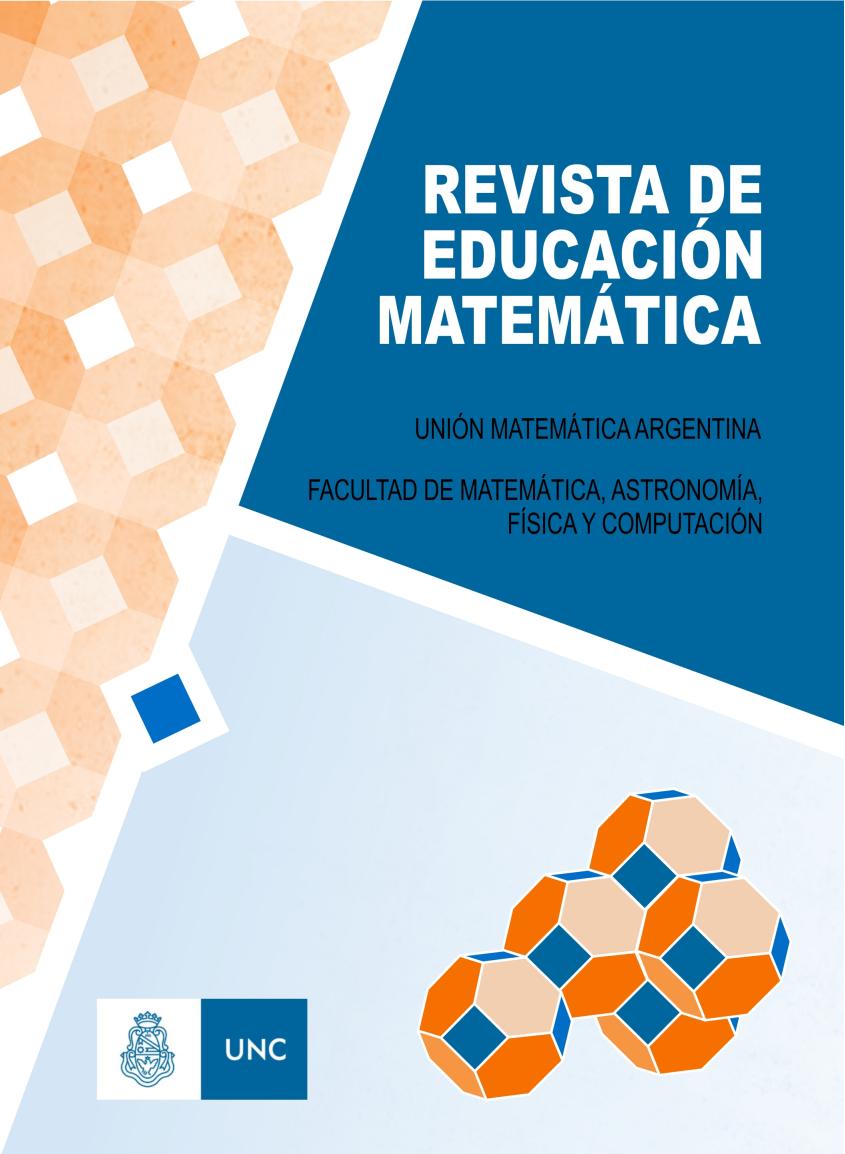Interpreting graphics: the use of GeoGebra
DOI:
https://doi.org/10.33044/revem.31160Keywords:
Registers of representation, instrumental procedures, GeoGebraAbstract
Problems in which students have to interpret and “read” information from a graph of a function (or a relationship between two variables), given a situation in an extra-mathematical context, are well known. Questions to find the corresponding value of a certain abscissa (or ordinate), in which sometimes the in- formation can be deduced exactly and others approximately, are usually included. It is also possible to analyze variations or issues related to increasing or decreasing intervals of a function. Now, what happens if the graph is presented in GeoGebra? Are the procedures (or techniques) for deducing information from it the same as working with pencil and paper? In this article, we will anticipate different types of procedures that could be implemented by students. Some of them are closer to the work done with pencil and paper and others, in our opinion,
are extremely novel. Besides, we may ask ourselves what are the contributions, in terms of mathematical knowledge, that the software provides when working with "dynamic" graphs. It should be clarified that any potentiality of the software cannot be separated from the teaching intention.
Downloads
References
Arcavi, A., & Hadas. (2000). Computer medialted learning: an example of an approach. International Journal of Computers for Mathematical Learning, 5, 25-45. doi: https://doi.org/10.1023/A:1009841817245
Artigue, M. (2002). Learning mathematics in a CAS environment: The genesis of a reflection about instrumentation and the dialectics between technical and conceptual work. International Journal of Computers for Mathematical Learning, 7(3), 245-274. doi: https://doi.org/10.1023/A:1022103903080
Artigue, M. (2007). Tecnología y enseñanza de las matemáticas: desarrollo y aportes de la aproximación instrumental. In E. Mancera & C. Pérez (Eds.), Historia y Prospectiva de la Educación Matemática, Memorias de la XII Conferencia Interamericana de Educación Matemática (p. 9-21). México: Edebé Ediciones Internacionales, S. A.
Borsani, V., Cedrón, M., Cicala, R., Di Rico, E., Duarte, B., & Sessa, C. (2018). Modelización de relaciones entre magnitudes geométricas en un entorno enriquecido con TICs: actividades para la escuela secundaria, diseñadas en un grupo colaborativo. Yupana, 10, 56-69. doi: https://doi.org/10.14409/yu.v0i10.7697
Chevallard, Y., Bosch, M., & Gascón, J. (1997). Estudiar matemáticas: el eslabón perdido entre la enseñanza y el aprendizaje. Barcelona: ICE-HORSORI.
Duval, R. (1993). Registres de représentation sémiotique et fonctionnement cognitif de la pensée. Annales de Didactique et de Sciences Cognitives, 5(1), 37-65.
Downloads
Published
How to Cite
Issue
Section
License

This work is licensed under a Creative Commons Attribution-ShareAlike 4.0 International License.
Aquellos autores/as que tengan publicaciones con esta revista, aceptan los términos siguientes:
- Los autores/as conservarán sus derechos de autor y garantizarán a la revista el derecho de primera publicación de su obra, el cuál estará simultáneamente sujeto a la Atribución-CompartirIgual 4.0 Internacional (CC BY-SA 4.0), que permite:
- Compartir — copiar y redistribuir el material en cualquier medio o formato
- Adaptar — remezclar, transformar y construir a partir del material
- La licenciante no puede revocar estas libertades en tanto usted siga los términos de la licencia
- Los autores/as podrán adoptar otros acuerdos de licencia no exclusiva de distribución de la versión de la obra publicada (p. ej.: depositarla en un archivo telemático institucional o publicarla en un volumen monográfico) siempre que se indique la publicación inicial en esta revista.
- Se permite y recomienda a los autores/as difundir su obra a través de Internet (p. ej.: en archivos telemáticos institucionales o en su página web) después del proceso de publicación, lo cual puede producir intercambios interesantes y aumentar las citas de la obra publicada. (Véase El efecto del acceso abierto).










